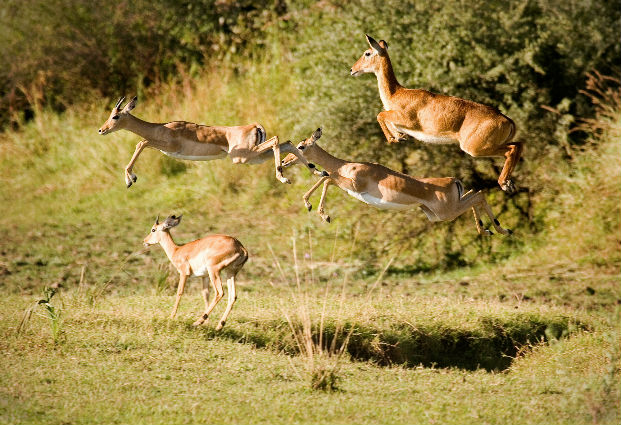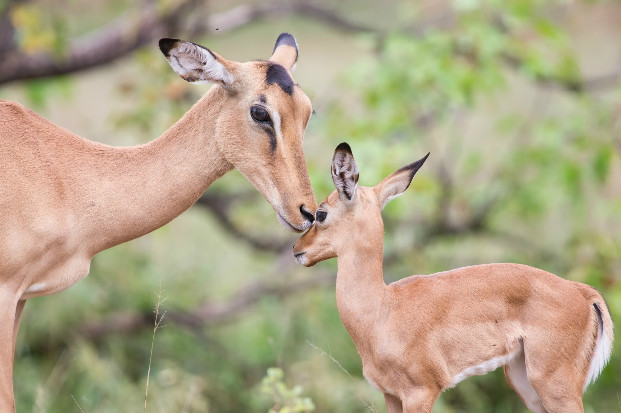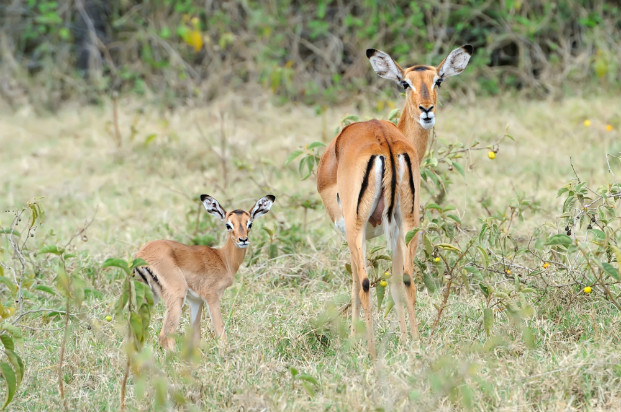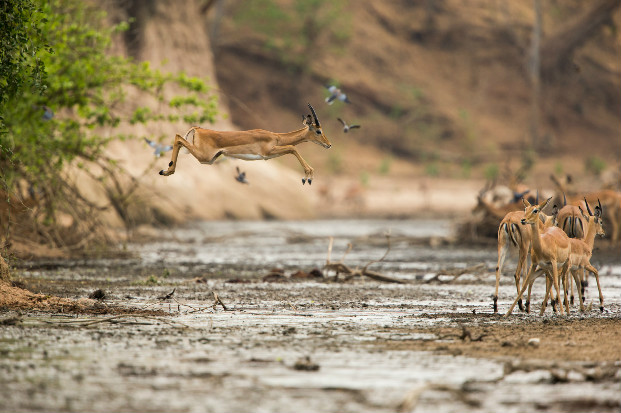Probably the most successful of all antelope species in Africa thanks to its many adaptations. Both a browser and grazer the impala can simply switch when one food source is low thus improving its chances of survival. They live in herds which means safety in numbers. Impala inhabit the area that borders woodland and grassland.
Vote for the fact you find most fascinating
Impala are incredibly athletic, they can leap 3m high and 12 m long which they often do to escape danger. It is easier to jump over a bush than through it or around it.
Impala have a very successful breeding strategy. They mate within a 2 to 3 week period which means that 6.5 months later all the young are born in a concentrated period. So much so that predators are unable to make a dent in the population.
Impala emit a loud alarm call which prompts the herd to scatter in all direction. This chaos makes it very hard for the predator to pick out an individuals.
Impala undertake reciprocal grooming, one impala will groom a herd member who will return the favour by grooming in exactly the same spot for the same amount of time.
Impala have modified incisor teeth which are loosely fitted. This enables them to act as a comb to hook out ticks as they groom themselves and others.
Defending a territory requires much time and effort that the impala ram loses condition, so much so they can only hold a territory for up to eight days.
The impala’s upper lip is split which enables them to feed on very short grass.
A rutting male impala will carry six times as many parasites as the females in his herd because he is too preoccupied to groom himself and too territorial to allow others to groom him.







